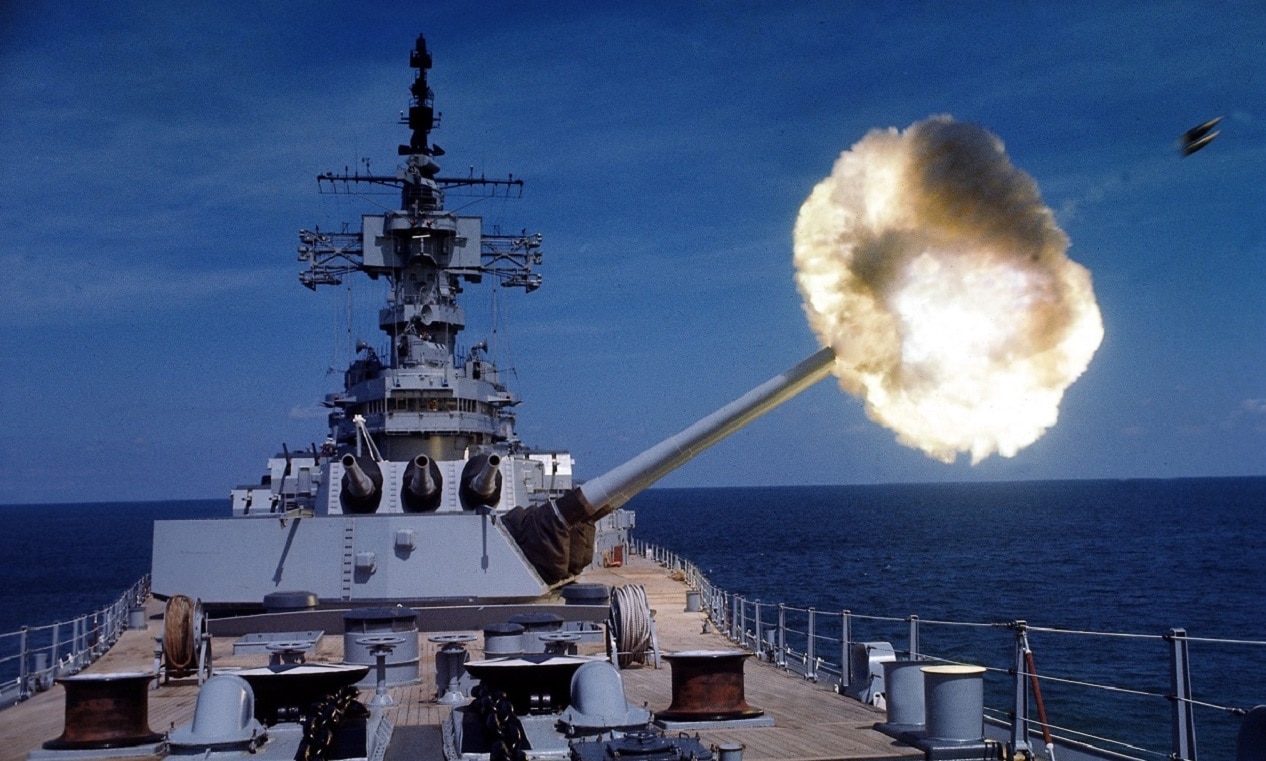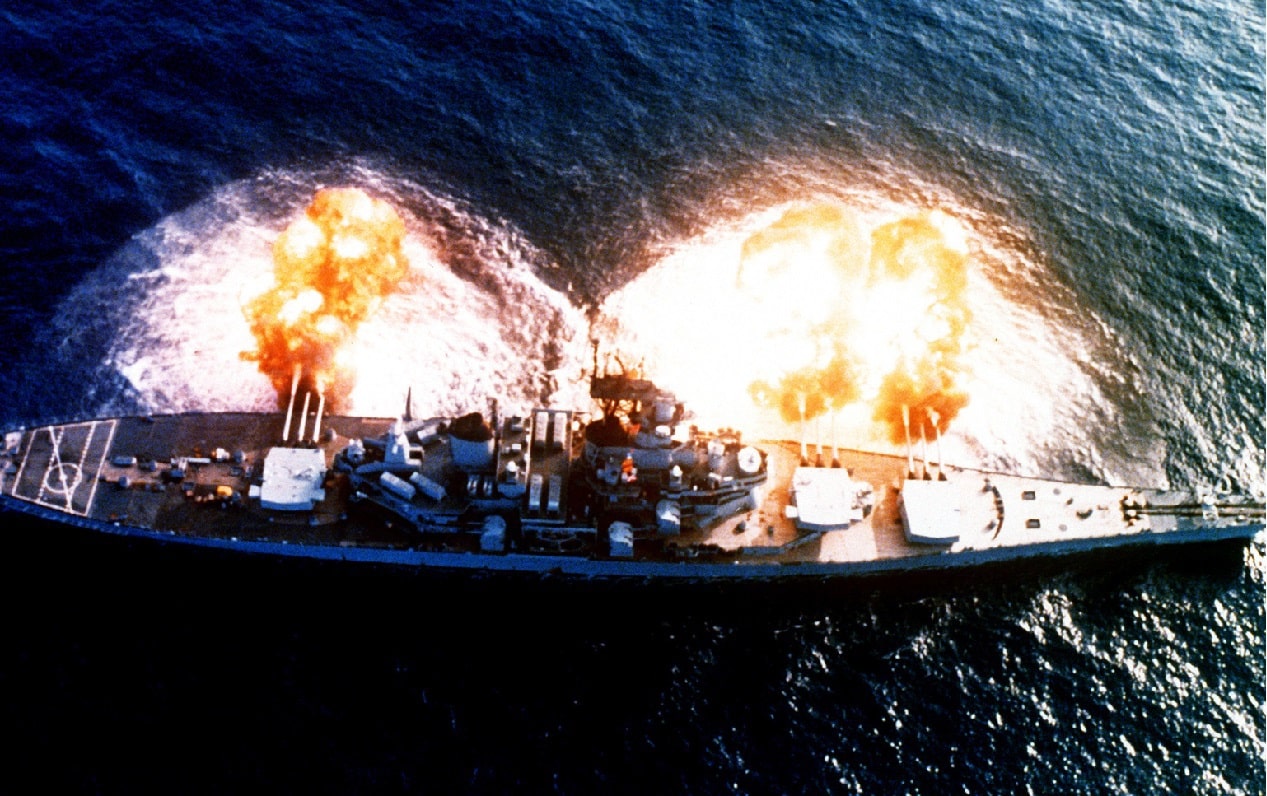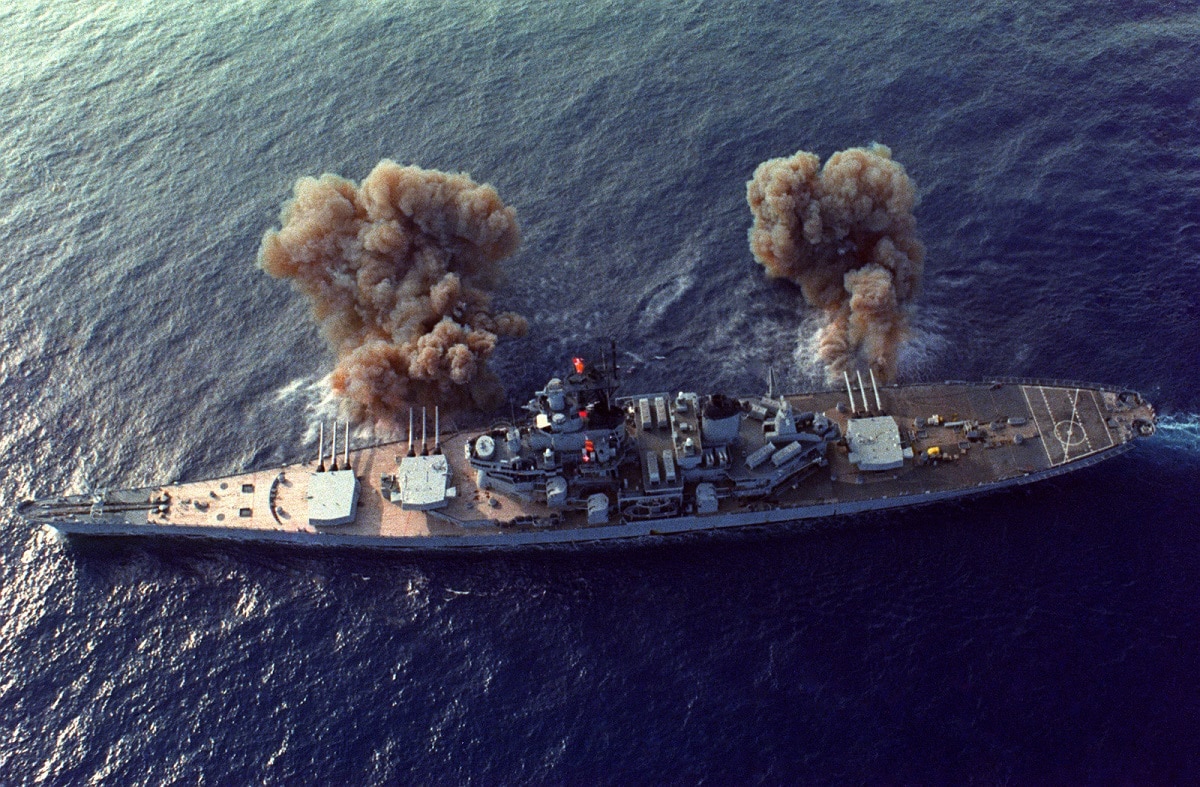Key Points: The Korean War, often overshadowed by other conflicts, saw the reactivation of WWII-era Iowa-class battleships to counter North Korean and Chinese forces.
-The USS Missouri, USS Iowa, USS New Jersey, and USS Wisconsin delivered devastating firepower with their 16-inch guns, targeting infrastructure, artillery, and troop concentrations.
-These battleships provided crucial fire support during pivotal moments, such as retreating U.S. forces in 1950 and countering Chinese advances.
-Although North Korean anti-access tactics like sea mines and repositioned infrastructure diminished their late-war effectiveness, the Iowa-class battleships significantly bolstered the Air-Sea strategy, safeguarding American troops and shaping the war’s outcome.
Iowa-Class Battleships: WWII Legends in the Korean Conflict
The conflict in Korea is known as the “Forgotten War.” However, historians still note the significance of holding the line against Communism in Northeast Asia.
Some military analysts considered the conflict as an effort to roll back China, reduce that country’s strength, and hinder the Soviet Union’s grand strategy.
Known for the extensive ground combat operations, one little-known aspect of the war was that the U.S. Navy played a role by re-activating World War Two Iowa-class battleships to bring doom to North Korean and Chinese military targets.
Iowa-class Battleships Strike Back
Indeed, the behemoth battleships shelled the enemy positions repeatedly during the Korean conflict.
Three Iowa-class battleships—USS Iowa, USS New Jersey, USS Wisconsin, and the USS Missouri – were brought back to life for another go-around.
The enormous 16-inch guns bombarded the North to destroy critical infrastructure like factories and bridges.
The battleships also provided fire support for offensive missions – saving the lives of countless soldiers and marines.

USS New Jersey Iowa-Class Battleship. Image Credit: US Navy.
The Air-Sea Strategy in World War Two
Known for giving Japan hell during World War Two, the Iowa-class battleships punished that nation and were thought to have helped bring Japan to its knees.
Combine sea and air power with island-hopping amphibious operations, hopefully forcing the Japanese to surrender. The Iowa-class battleships were an essential part of this Air-Sea strategy.
FDR, Marshall, and King wanted ultimate firepower, and the battleships would make a difference in the war.
Then, Iowa-Class Battleships Returned to the Fray During the Korean War
After World War II, battleships were unnecessary, and many were taken out of action – either retired or used for scrap.
Some remained in reserve for a rainy day. It was a good thing because the North Koreans invaded the South in 1950.
This operation, called “Storm” by North Korean leader Kim Il-sung, caught the United States unaware and sent soldiers running to the southern tip of the Korean peninsula.
Under Douglas MacArthur, the U.S. forces conducted a daring counterattack by landing at Inchon with a wildly successful amphibious operation.
Then, it was the North Korean’s time to be surprised. MacArthur’s forces pushed Kim’s army above the 38th parallel until China entered the war and struck back, creating a stalemate.
Now what? How would the United States respond?

An overhead view of the battleship USS NEW JERSEY (BB-62) firing a full broadside to starboard during a main battery firing exercise.
One idea was to conduct a new strategy to bring the U.S. Navy into the fight with its battleships.
The Iowa-class was back in action.
The USS Missouri was first and fired numerous volleys against the North Korean positions in support of friendly forces.
When the Chinese made their incursion later in 1950, it was the Missouri that responded by providing close support to retreating Americans.
Then Missouri’s sister ships entered the fray.
Time to Get Even
The USS Iowa, USS New Jersey, and USS Wisconsin were still in good shape and required only a tiny amount of work to be battle-ready.
Now, it was the Navy’s turn to get payback.
The battleships were sent to the theater and immediately began shelling North Korean and Chinese positions to maximum effect.

An overhead view of the battleship USS NEW JERSEY (BB 62) firing its Mark 7 16-inch/50-caliber guns to starboard.
The Air-Sea strategy was repeated. The Iowa-class battleships destroyed “cave systems, concealed artillery, and command posts. As with the end of the Second World War, the battleships also hit strategic and operational targets, including railways, industrial parks, and transport centers,” according to the National Interest.
North Koreans Devise an Early Anti-Access Area Denial Technique
However, the North Koreans had an answer to the battleships’ reign of terror. The enemy used sea mines in an early form of Anti-Access/ Area Denial, which hindered the dreadnoughts’ freedom of maneuver.
The North also utilized coastal artillery to fire back. The North Koreans later learned to rebuild military infrastructure out of the range of the battleships’ fire.
Same with troop concentrations. The number of North Korean and Chinese soldiers operating close to the coast was reduced, and the Iowas were not as effective toward the end of the conflict.
The Iowa-class battleships were a noteworthy addition to Korean War history. They made a triumphant return to battle and were an essential cog in the Air-Sea strategy that helped the Americans and their allies against the North Korean and Chinese hordes.
Without the Iowa-class vessels destroying critical military targets, the United States would maybe not have lasted as long as it did.
So, the next time you read about or discuss the Korean War, know that battleships played a role too in protecting American soldiers and marines.
The Iowa-class was not just limited to World War II, and the battleships again crushed the enemy soldiers and military targets – just how they were designed to do it.
About the Author: Dr. Brent M. Eastwood
Brent M. Eastwood, PhD, is the author of Don’t Turn Your Back On the World: a Conservative Foreign Policy and Humans, Machines, and Data: Future Trends in Warfare, plus two other books. Brent was the founder and CEO of a tech firm that predicted world events using artificial intelligence. He served as a legislative fellow for U.S. Senator Tim Scott and advised the senator on defense and foreign policy issues. He has taught at American University, George Washington University, and George Mason University. Brent is a former U.S. Army Infantry officer. He can be followed on X @BMEastwood.

